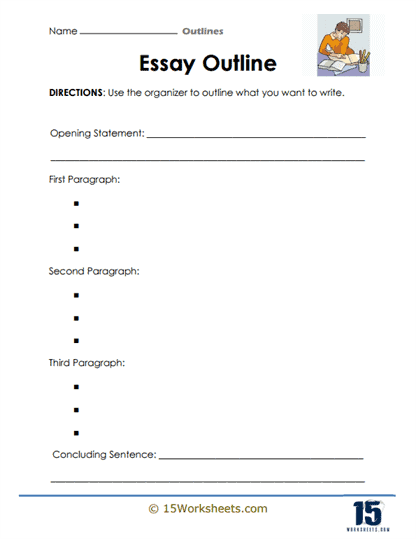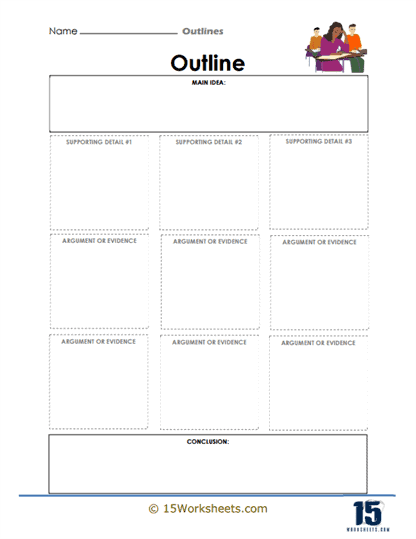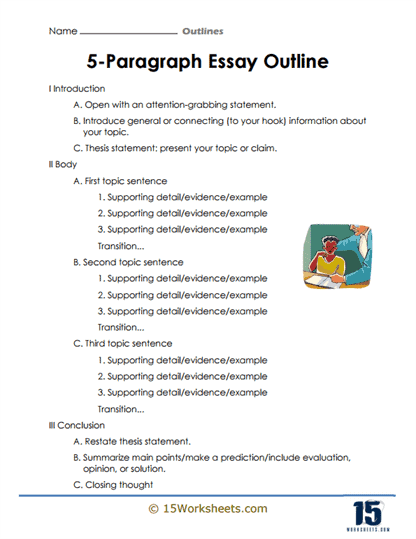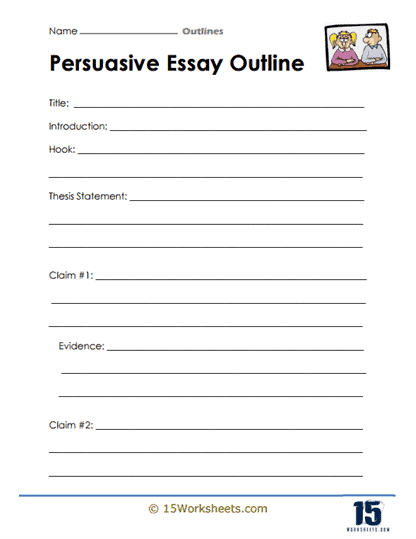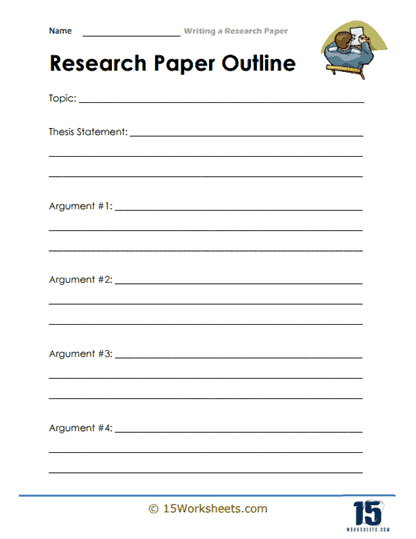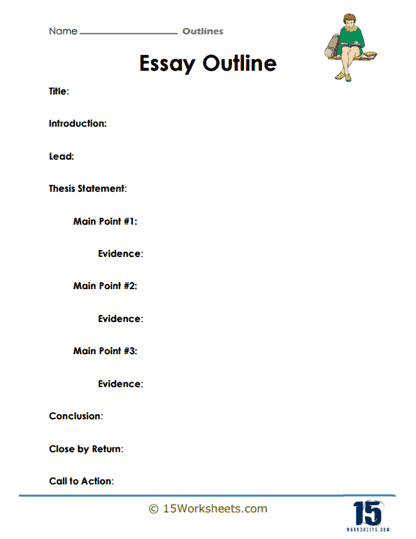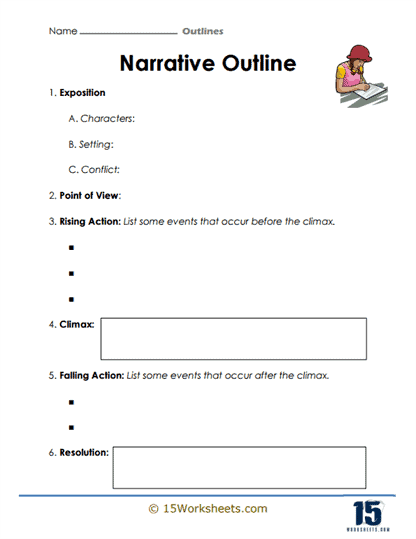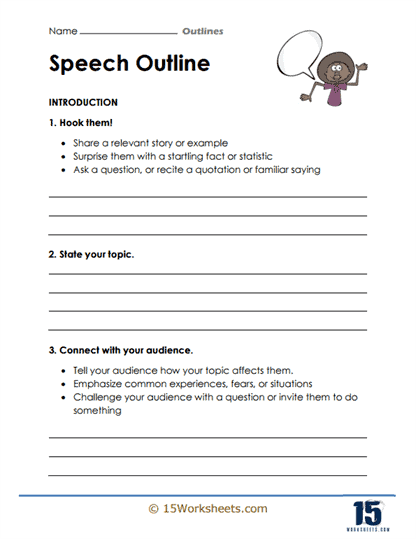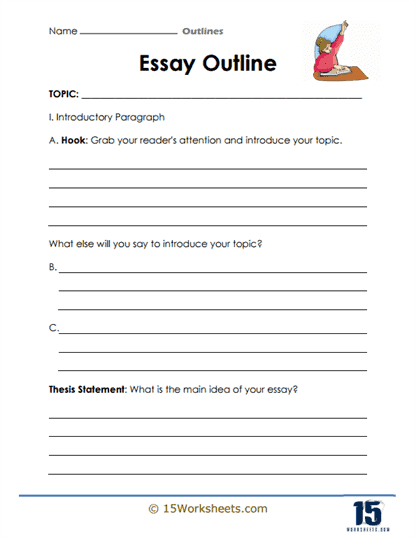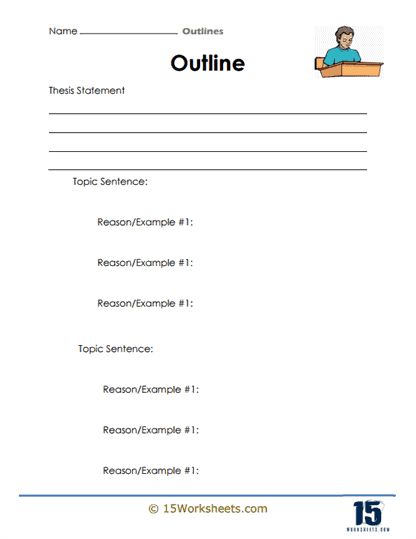Outlines Worksheets
All About These 15 Worksheets
These worksheets consist of a series of prompts or questions that guide the writer through the process of outlining their ideas before they start writing. They are especially helpful for longer pieces of writing such as essays, research papers, or even book chapters.
They will often include sections or categories where the writer can jot down key points, main ideas, supporting evidence or arguments, and transitions between different sections. They may also include space for brainstorming ideas, identifying a thesis statement or main objective, and outlining the overall structure of the piece.
The purpose of these worksheets is to help writers clarify their thoughts, organize their content logically, and create a roadmap for their writing. By breaking down the writing process into smaller, manageable parts, writers can ensure that their work flows smoothly and that they address all necessary points or arguments.
What is the Basic Outline Format?
Here is a basic framework to you to follow, but note that this can be ineffective for very unique topics. The outline may vary depending on the complexity and length of your paper.
1. Introduction
Hook – An interesting sentence or question to grab the reader’s attention.
Brief background information or context.
Thesis statement – The main idea or argument of your work.
2. Body
I. Main Point 1
A. Supporting Detail 1
i. Sub-detail
ii. Sub-detail
B. Supporting Detail 2
i. Sub-detail
ii. Sub-detail
II. Main Point 2
A. Supporting Detail 1
i. Sub-detail
ii. Sub-detail
B. Supporting Detail 2
i. Sub-detail
ii. Sub-detail
III. Main Point 3
A. Supporting Detail 1
i. Sub-detail
ii. Sub-detail
B. Supporting Detail 2
i. Sub-detail
ii. Sub-detail
3. Conclusion
Restate the thesis statement.
Summarize main points.
Closing thoughts or implications.
What are the 5 steps to Writing an Outline?
Identify the Purpose or Thesis – Understand the goal of your writing. Is it to inform, persuade, analyze, or narrate? If it’s an academic paper, you will typically have a thesis statement that you will need to defend with your writing.
Brainstorm – Write down all the ideas that come to your mind related to the topic. Use techniques like free writing, listing, clustering, or questioning to generate ideas.
Organize Your Ideas – Based on your brainstorming, organize your thoughts into main points and sub-points. Each main point should be a key piece of support for your thesis. Sub-points are the specific arguments or evidence you will use to support each main point.
Arrange Your Main Points – Put your main points in a logical order. This could be chronologically, by importance, by complexity, etc., depending on your topic and purpose.
Elaborate Your Points – Under each main point, elaborate more by adding sub-points. This could include specific arguments, examples, data, or anecdotes.





